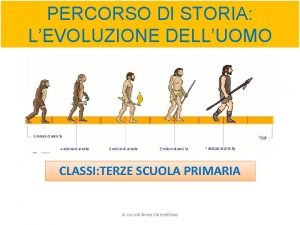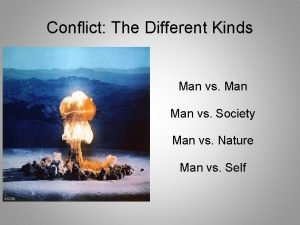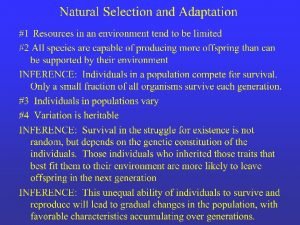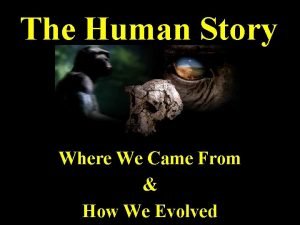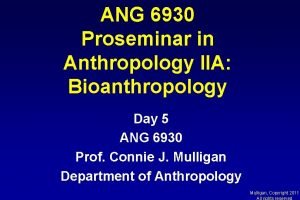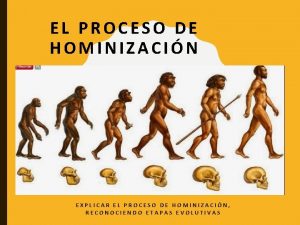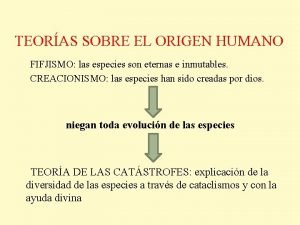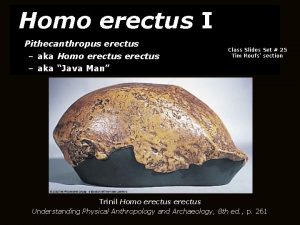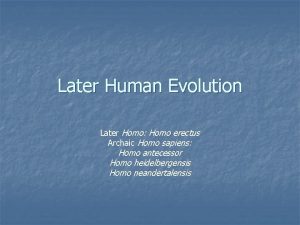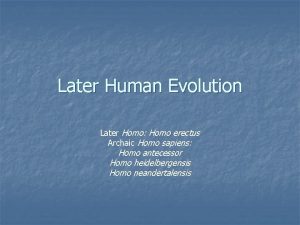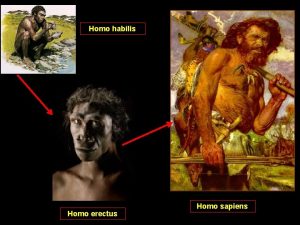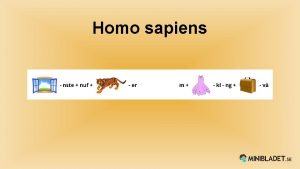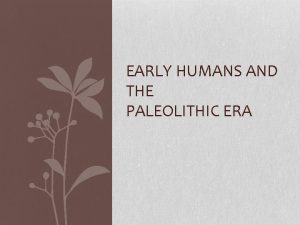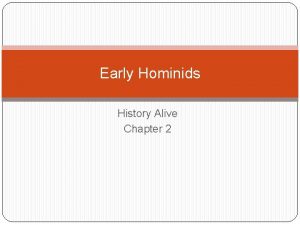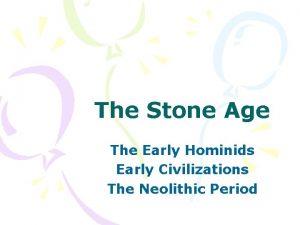Early Civilizations Later Hominids Homo Erectus upright man













- Slides: 13

Early Civilizations

Later Hominids § Homo Erectus, “upright man” § Larger brain capacity (1000 cc), improved tool use, control of fire § Homo Sapiens, “consciously thinking human” § Largest brain, esp. frontal regions § Most sophisticated tools and social organization § Migrations of Homo Erectus and Homo Sapiens

Period of Pre-History § Paleolithic Age § Warming and cooling climates § Control of Fire § Hunter-Forager Society § Roles in Society § Egalitarian § Small distinction between poor and wealthy § Not many layers of leaders § Patriarchal § Religion and Art

Neolithic Age – New Stone Age § Warming Climates § Agriculture § Surplus § Less diversified § Pastoralism § Domestication of plants and animals

Back to Agriculture § Specialization of Labor § Artisans, merchants § Soldiers, religious and political leaders § Writing § Growth of villages, towns, cities § Migration, no more § Surplus > reliable food source § Social Stratification § Occupations – specialized workers § Gender roles – specificity § Spread of Diseases § Proximity; vulnerable; lived in larger groups


Back to Agriculture § Government (? ) § Religions(? )

Technological Innovations


Origins and Early Spread of Agriculture

Global spread of hominids and Homo sapiens

Core and Foundational Civilizations § § § Mesopotamia (Fertile Crescent) – Tigris and Euphrates Rivers Egypt – Nile River India (Mohenjo-Daro and Harappa) - Indus River China (Shang) – Yellow (Huang He) River Mesoamerica (Olmecs) – Coatzacoalcos River Chavin in Andean South America - Mosna and Huachecsa rivers merge


